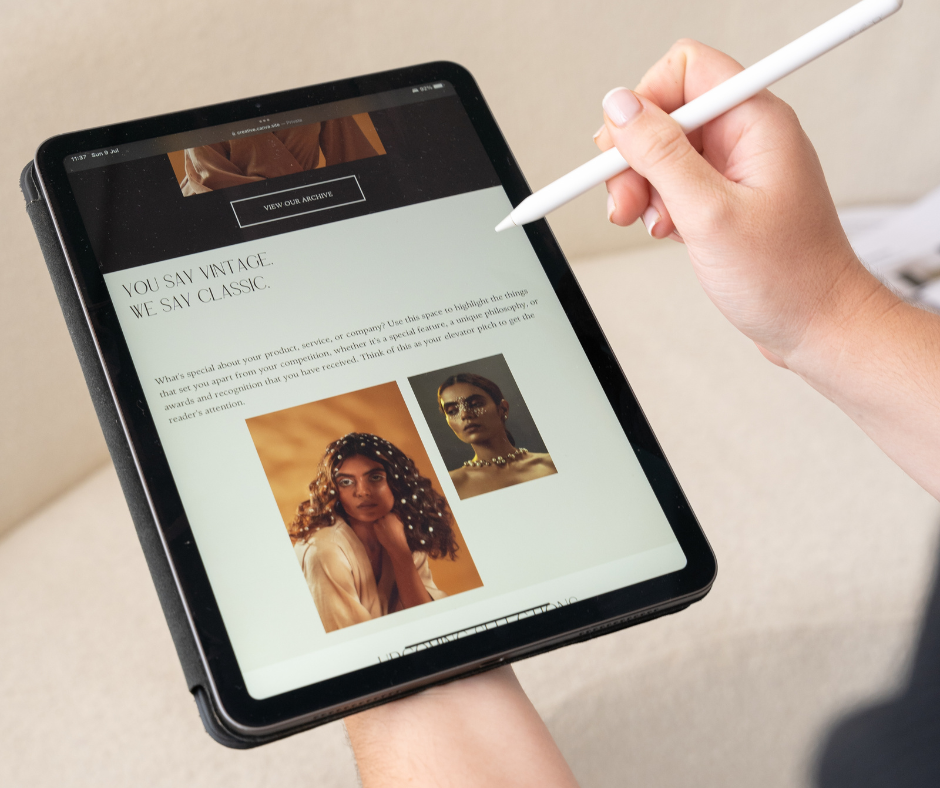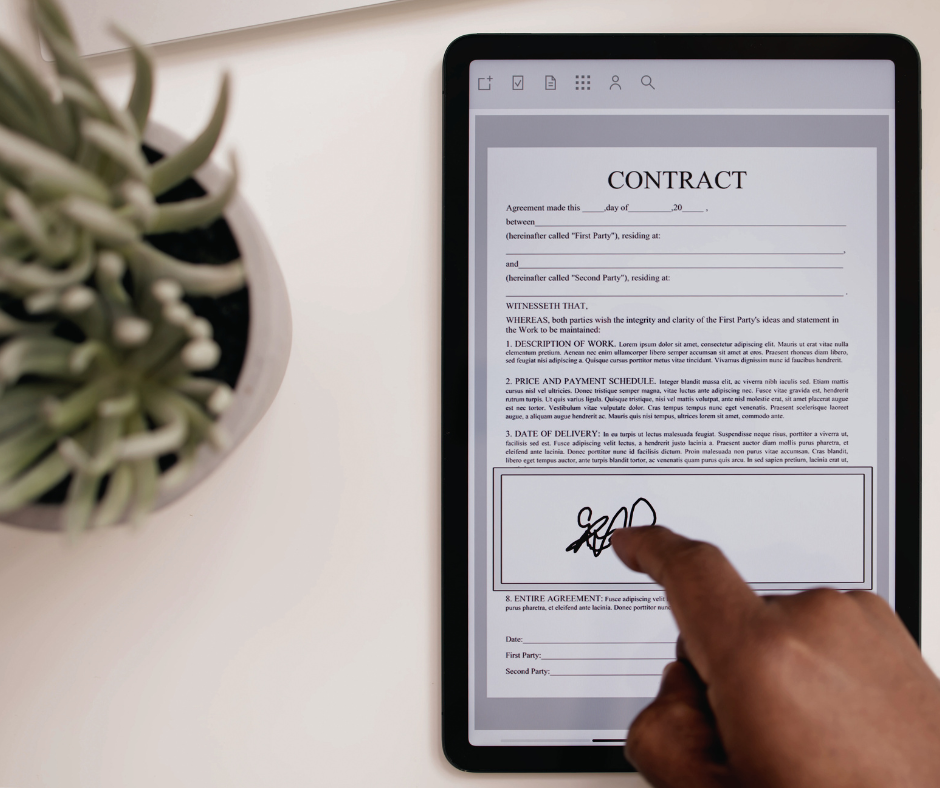
DesignDash Guide: How to Become a Freelancer as a Life-Long Employee
Summary
Transitioning from a traditional employee role to freelancing can be challenging but also highly rewarding. This guide provides key steps and strategies to succeed in freelancing, including embracing a freelance mindset, understanding your marketable skills, and building your brand. It also covers practical aspects such as managing self-employment taxes and legally structuring your business. By taking a holistic approach, you can enjoy the flexibility, autonomy, and potential for higher earnings that freelancing offers while avoiding common pitfalls.
Reflection Questions
- What skills have you developed in your career that are transferable to a freelancing role, and how can you leverage them to attract clients?
- How can you create a balanced routine that allows you to maintain productivity while enjoying the flexibility of freelancing?
- What steps can you take to build a financial safety net that will support you during the initial phases of your freelancing career?
Journal Prompt
Reflect on a time when you had to adapt to a significant change in your professional life. What challenges did you face, and how did you overcome them? Considering that experience, how can you apply those lessons to transition smoothly into freelancing? Write about the specific actions you will take to ensure a successful shift from being an employee to becoming a freelancer.
Transitioning from a traditional employee role to freelancing can be daunting but rewarding. This DesignDash guide will help you navigate the shift by outlining key steps and strategies to succeed from the moment you start freelancing. Embracing the freelance mindset, understanding your marketable skills, and building your brand are important, but so is learning how to pay self-employment taxes and legally structure your business. With a holistic approach, you can enjoy the flexibility, autonomy, and the potential for higher earnings that freelancing offers without falling prey to any of its pitfalls.
How to Become a Freelancer as a Life-Long Employee in 17 Steps
Step 1: Understanding the Shift

Freelancing has exploded in popularity recently, thanks to the digital age making remote work more accessible. With the internet, people can now offer their skills and services to clients worldwide without being tied to a specific location. This shift gained even more momentum during the COVID-19 pandemic, which showed that working from home is not only possible but often just as productive as being in an office. The result? A growing number of professionals are ditching the traditional 9-to-5 to become their own bosses.
Freelancing comes with a host of perks that make it an attractive career path. Flexibility is a big one—you get to decide when and where you work, which means you can tailor your schedule around your life, not the other way around. Autonomy is another huge advantage; you pick the projects you want to work on and the clients you want to work with. Plus, there’s the potential for higher earnings. Without a middleman taking a cut, you can negotiate your rates directly with clients and often earn more than you would in a traditional job.
Step 2: Addressing the Mindset Change

Switching from being an employee with a standard day job to full-time freelance work is a significant change, but it’s entirely doable with the right mindset. As an employee, you’re used to a structured environment where someone else sets the rules and guidelines.
You’re also used to normal working hours. As a freelance writing, graphic designer, interior designer, or other creative professional, you call the shots. You’re responsible for everything from finding clients to managing your workload. It might seem overwhelming at first, but remember that with great responsibility comes great freedom. Embrace this new role as a chance to shape your career exactly how you want it.
Stepping into the freelancing world without prior knowledge can be scary, especially when you think about the uncertainties like irregular income and lack of job security. But don’t let fear hold you back. Start by building a financial safety net to cover your expenses for a few months while you get your freelance business off the ground.
Network with other freelancers and join online communities where you can share experiences and get advice. Most importantly, keep a positive attitude and view every challenge as an opportunity to learn and grow. You’ve got this!
Step 3: Identifying Marketable Skills

Before you start freelance writing, photographing, or designing, take a good look at your professional journey. What skills have you picked up along the way? Make a list of all your abilities, from technical skills like software proficiency to softer skills like communication and problem-solving. This self-assessment will give you a clear idea of what you can offer to potential clients. Don’t just focus on your current job—think about all the roles you’ve had and the various skills you’ve developed over time.
Transferable skills are your secret weapon in the freelancing world. These are skills that you can apply in various industries and job roles. For example, if you’re great at project management, that skill is valuable whether you’re in tech, marketing, or any other field. Identify these versatile abilities and make sure to highlight them when marketing yourself to potential clients. Showing that you can adapt and bring a range of skills to the table makes you a more attractive candidate for freelance gigs.
Step 4: Exploring Freelancing Opportunities

Researching industries and niches is crucial to kickstart your freelancing career. You need to know where your skills will be most valuable. Dive into different industries and niches to see where there’s a demand for what you offer. Use online resources, industry reports, and job boards to get a sense of the market landscape. Don’t hesitate to reach out to professionals in fields that interest you—they can provide insider knowledge and potentially open doors to new opportunities.
The best freelancing gigs come from where your interests and market demand intersect. Think about what you love doing and how it can be monetized. For instance, if you’re passionate about writing and there’s a high demand for content creators in the tech industry, that’s a great niche to target. Aligning your work with your interests not only keeps you motivated but also makes you more attractive to clients who value genuine enthusiasm and expertise.
Step 5: Creating a Professional Portfolio

Your portfolio is your calling card in the freelancing world. It’s the first thing potential clients will look at to gauge your skills and experience. A strong portfolio demonstrates your capabilities and showcases the quality of your work, making it easier for clients to trust you with their projects. Remember, a well-curated portfolio can be the difference between landing a job and missing out on an opportunity.
Start by selecting your best work that highlights your skills and versatility. Include a mix of projects that show different aspects of your expertise. For each project, provide a brief description of the challenge, your approach, and the results. Visuals are powerful, so include images, videos, or links where applicable. Don’t forget to update your portfolio regularly with new projects to keep it current and relevant.
Step 6: Developing an Online Presence with a Professional Website and Social Media

Whether you’re an independent designer or a freelance writer, having your own website is crucial for establishing your brand as a freelancer. Here, prospective clients can learn about you, see your portfolio, and contact you easily. Use your website to tell your story, showcase your work, and outline your services.
Make sure it’s professional-looking and easy to navigate. Investing in a good website pays off by making a strong first impression on visitors. It makes you seem like you belong among other experienced freelancers—even if you’re courting your very first client.
Social media platforms like LinkedIn, Twitter, and Instagram can significantly boost your visibility. Regularly share updates about your work, industry insights, and engage with your audience. Join professional groups and participate in discussions to build your network.
LinkedIn is especially useful for connecting with potential clients and collaborators. Remember, the more active and engaged you are, the more likely you are to attract opportunities.
Step 7: Registering Your Business

Before you start taking on clients, make sure your business is legally sound. Decide on a business structure (sole proprietorship, LLC, etc.) that best fits your needs. Register your business name, get any necessary licenses or permits, and open a business bank account.
Taking these steps not only ensures you’re compliant with local laws but also protects your personal assets and builds credibility with clients.
Step 8: Paying Your Taxes

As a freelancer, managing your taxes is crucial. Unlike traditional employment, taxes aren’t automatically deducted from your income, so it’s your responsibility to set aside money for tax payments. Learn about your tax obligations, including income tax, self-employment tax, and any local taxes.
Consider working with an accountant or using accounting software to track your income and expenses. Staying on top of your finances will save you headaches and ensure you’re prepared come tax season.
Step 9: Setting Up a Productive Workspace

A well-organized workspace is essential for productivity. Designate a specific area in your home where you can work without distractions. Invest in a comfortable chair, a good desk, and proper lighting. Keep your workspace tidy and stocked with the supplies you need. A dedicated home office helps you maintain a professional mindset and keeps your work separate from your personal life.
Working from home blurs the lines between work and personal time. Set clear boundaries to ensure you’re not working around the clock. Establish a routine with set work hours, and stick to it. Communicate your schedule to family or housemates so they respect your work time. Taking regular breaks and setting aside time for exercise and relaxation will help you stay balanced and avoid burnout.
Step 10: Leveraging Existing Contacts and Professional Networks
Networking is a powerful tool for freelancers. Start with your existing contacts—let them know about your new venture and ask if they know anyone who might need your services. Attend industry events, join professional organizations, and participate in online forums to meet new people. Building relationships takes time, but a strong network can lead to referrals and new business opportunities.
Fuel your creative fire & be a part of a supportive community that values how you love to live.
subscribe to our newsletter
*please check your Spam folder for the latest DesignDash Magazine issue immediately after subscription

Freelancing platforms like Upwork, Fiverr, and Freelancer can connect you with clients looking for your skills. Create a profile that highlights your expertise and experience. Join online communities and forums where freelancers share advice and job leads. Being active in these communities not only helps you find work but also provides support and insights from fellow freelancers.
Step 11: Crafting Effective Pitches and Proposals

To land clients and get the next freelance gig immediately when you need it, you must effectively market your services. Craft pitches that clearly explain what you offer and how you can solve potential clients’ problems. Personalize each pitch to show that you understand their needs. Use email, social media, and networking events to reach out to potential clients. Consistent, targeted outreach increases your chances of securing projects.
Digital marketing tools can help you reach a wider audience. Use email marketing to stay in touch with past clients and keep them updated on your services. Leverage SEO strategies to make your website more visible in search engine results. Consider running targeted ads on social media or search engines to attract new clients. These tools can amplify your efforts and bring more business your way.
Step 12: Establishing Clear Contracts and Agreements

Contracts are essential in freelancing to protect both you and your clients. They outline the scope of work, deadlines, payment terms, and other critical details. A well-drafted contract ensures that both parties have a clear understanding of expectations, reducing the risk of disputes. Always use a contract for every project, no matter how small.
When creating a contract, include key elements like project scope, deliverables, timelines, payment terms, and confidentiality clauses. Specify how changes to the project will be handled and include a termination clause. Make sure both you and the client sign the contract before starting work. Clear, detailed agreements help prevent misunderstandings and provide a legal basis if issues arise.
Step 13: Maintaining Clear and Consistent Communication

Clear communication is crucial for successful freelancing. Keep clients updated on your progress and promptly address any questions or concerns they have. Use tools like email, project management software, and video calls to stay in touch. Regular check-ins ensure that everyone is on the same page and helps build a strong working relationship.
Effective project management tools can streamline your workflow and keep clients informed. Use freelance platforms like Trello, Asana, or Slack to manage tasks, set deadlines, and communicate with clients. Some are designed for specific industries (think freelance writers or event planners), so check out the ones created for your niche first. Clearly define project milestones and deliverables, and update clients regularly on your progress. Managing expectations and maintaining transparency helps ensure a smooth project experience.
Step 14: Prioritizing Tasks and Setting Boundaries

Good time management is essential for freelancing success. Start each day by prioritizing your tasks and setting goals. Use techniques like the Pomodoro Technique to stay focused and productive. Track your time to understand how you’re spending it and identify areas for improvement. Effective time management helps you stay organized and meet deadlines.
To avoid burnout, it’s important to set boundaries between work and personal life. Schedule regular breaks and make time for activities you enjoy outside of work. Learn to say no to projects that overload you. Maintain a healthy work-life balance by setting realistic goals and taking care of your physical and mental well-being. A balanced approach ensures sustained productivity and happiness.
Step 15: Keeping Skills Up-to-Date

The freelancing world is dynamic, and staying current with industry trends and skills is crucial. Invest time in continuous learning through online courses, workshops, and reading relevant books and articles. Stay updated with the latest tools and technologies in your field. Regularly upgrading your skills keeps you competitive and opens up new opportunities.
Actively seek feedback from clients to understand what you’re doing well and where you can improve. Use this feedback to refine your services and enhance client satisfaction. Self-reflect on your performance after each project to identify areas for growth. Consistent improvement helps you deliver high-quality work and build a strong reputation.
Step 16: Managing Income Fluctuations

Freelancing often comes with income variability, so it’s important to plan for these fluctuations. Diversify your client base to reduce reliance on a single source of income. Save a portion of your earnings during high-income months to cover lean periods. Consider offering retainer agreements for steady, recurring revenue. Strategic planning helps manage financial ups and downs.
Having a financial cushion is essential for stability in freelancing. Aim to save enough to cover at least three to six months of living expenses. This buffer provides security and peace of mind, allowing you to focus on your work without financial stress. Regularly review and adjust your savings goals based on your income patterns.
Step 17: Setting Short-Term and Long-Term Goals for Your Freelance Career

Setting clear goals helps maintain motivation and focus. Break down your long-term aspirations into manageable short-term objectives. Create a roadmap with specific milestones and deadlines. Regularly review your progress and celebrate achievements along the way. Goal setting keeps you aligned with your vision and drives you to achieve your freelancing dreams.
Accountability is key to staying on track with your goals. Share your goals with a mentor, friend, or accountability group to keep yourself committed. Regular check-ins and progress updates provide motivation and help you stay focused. Seek support from professional networks and communities where you can share experiences and gain insights. Surrounding yourself with a supportive network enhances your freelancing journey.
Final Thoughts on Making the Change! Here’s to You!

Freelancing empowers women to take control of their careers, enjoy greater flexibility, and pursue their passions. If you’re considering this path but still want the security of your full-time job, why not start by moonlighting? Taking on freelance projects in your spare time allows you to build a client base and gain experience without the immediate pressure of leaving your stable job. This is a practical way to transition and see if freelancing is the right fit for you. Just make sure that your current job allows it! Whether you want to explore freelance content writing, ceramics, interior design, or another creative field, now might be the right time! Let us know how it goes in the comments below.








